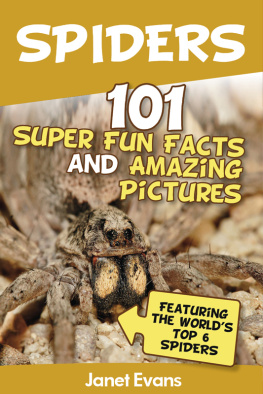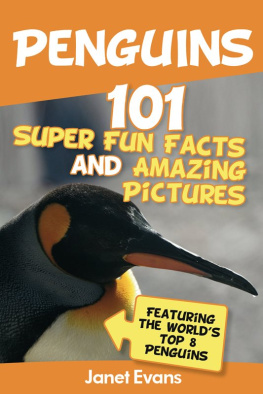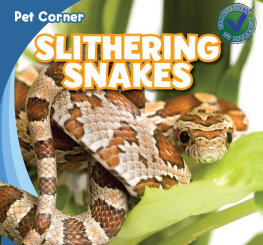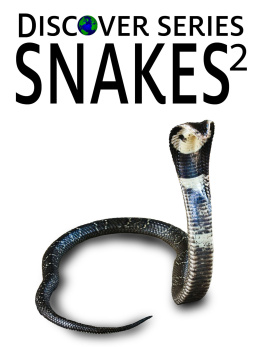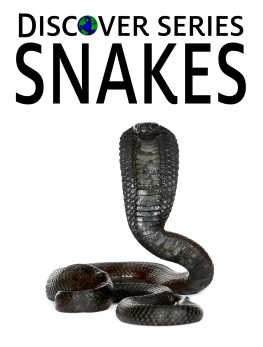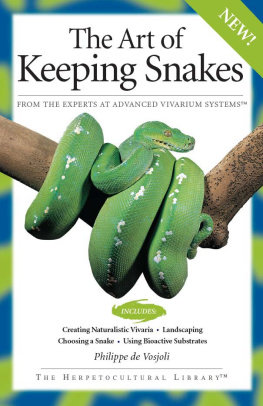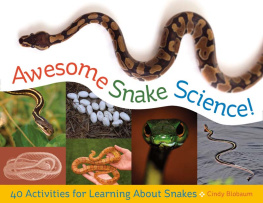SNAKES: 101 SUPER FUN FACTS AND AMAZING PICTURES
(FEATURING THE WORLD's TOP 10 SNAKES)
Table of Contents
Are you afraid of snakes?
Many people find snakes creepy and frightening. Its a normal reaction, since snakes are strange creatures that dont look so friendly and cuddly. People are also scared to get bitten by snakes because they have poisonous fangs.
However, snakes are mostly misunderstood creatures. There are different circumstances which explain why a snake usually attacks humans. You probably would not one as a pet at home, but you would definitely understand them better with these fascinating facts scientists have discovered about snakes in general.

Figure 1: Not all snakes are dangerous to humans. These kids are playing with harmless varieties of snakes.
Snake Facts
- Snakes are reptiles, cold-blooded creatures or creatures that adjust body temperatures according to their environment. They belong to the sub-order serpentia, a group of flexible, long and crawling reptiles.
- There are almost 3,000 known species of snakes worldwide, but only 375 are venomous. They are found everywhere except in extremely cold places like Antarctica, Iceland, and Greenland.
- Snakes have noses, but they use their tongues to smell things. This is why snakes often stick their tongues out, creating the hissing sound we hear from them.
- Snakes kill their prey either by injecting venom through their fangs or by choking them by wrapping their bodies around them.
- Snakes are deaf and have poor eyesight, but their sense of smell is strong. They can also feel sound vibrations.

Figure 2: All snakes have teeth, but only poisonous snakes have fangs. They use these fangs to inject poison on their prey.
- Snakes regulate their body temperature by sunning themselves or moving to cooler places. During the winter, snakes often go to long periods of sleep called hibernation.
- Snakes swallow their prey whole. A snakes throat stretches to accommodate the size of its prey, and its stomach contains the necessary substances to digest them.
- Snakes take a long time digesting their prey. In fact, some species may live without eating again for as long as one year!
- Like lizards, snakes shed their skins regularly as they grow bigger. They do this by rubbing their bodies on rough surfaces, such as a rock. Snakes shed around 3 to 6 times yearly.
- Most snakes reproduce by laying eggs. Only a few species can hatch baby snakes directly from their bodies.

Figure 3: Snakes shed their old skin because they no longer fit in them. Shedding also removes unwanted parasites living in their old skin.
- In captivity, some snakes have been recorded to live for as long as 50 years. Their life span in the wild has not yet been determined.
- Snakes are nocturnal. They are more active at night than during the day.
- Female snakes produce hormones called pheromones when they are ready to mate. This leaves a scent trail to be followed by male snakes. The mating process lasts at least an hour, and could even last the whole day.
- Their skin coloring and markings often act as camouflage against their predators. Aside from humans, snakes have a lot of enemies, including birds of prey, raccoons, bears, and foxes.

Figure 4: Snakes often choose to lay their eggs underground in order to incubate them. Most snakes abandon their eggs immediately after laying them.

Figure 5: snake: A male and female snake mates with each other to produce their young. The mating season lasts several months before the eggs or baby snakes are born.
The Worlds Top 10 Snakes
Of all snake species, the following species are the most fascinating ones. Many of these snakes have often been the subject of horror movies and myths.
- Anaconda
- Boa Constrictor
- Cobra
- Corn Snake
- Garter Snake
- Python
- Rattlesnake
- Sea Snake
- California King Snake
- Milk Snake
The following are just some amazing facts about these snake breeds that scientists have been able to discover.
Anaconda (Eunectes murinus)

Figure 6: An anaconda opens its jaws wide to attack its prey. Its jaws are not hinged, so they can stretch wide enough to swallow prey larger than the anacondas diameter.
Scientific classification
- Kingdom:
| Animalia |
- Phylum:
| Chordata |
- Subphylum:
| Vertebrata |
- Class:
| Reptilia |
- Order:
| Squamata |
- Suborder:
| Serpentes |
- Family:
| Boidae |
- Genus:
| Eunectes |
9. Species: | E. murinus |
- The anaconda, also known as the green anaconda, is the heaviest snake in the world. They can reach a body length of up to 16 feet and weigh 70 to 150 lbs.!
- Anacondas are not poisonous. They kill their prey by wrapping their massive bodies around it and squeezing until the prey is dead.
- Anacondas are a species of boa snakes primarily found in South American rain forests. They are distinguishable by their olive green skin peppered with black blotch-like marks. Their eyes are located at the top of their heads.
- A group of anacondas is called a knot.
- Anacondas love to swim. They can submerge themselves fully underwater and wait for their prey to approach.
- Anacondas feed not only on birds and fishes, but also on larger animals like tapirs, wild pigs, capybaras and occasionally jaguars. Some have even been reported to eat fellow anacondas.
- Anacondas are solitary creatures. They only mingle during breeding balls, a gathering of anacondas for the sole purpose of mating.
- Anaconda eggs are hatched within their mothers body. A female anaconda can give birth to as much as 80 baby anacondas at once. Each baby snake can reach up to 2 feet long.
- Humans pose the biggest threat to anacondas. Not only do humans kill anacondas out of fear, their skin is also sold illegally in different parts around the world.
Boa Constrictor (Boa constrictor constrictor)

Next page





